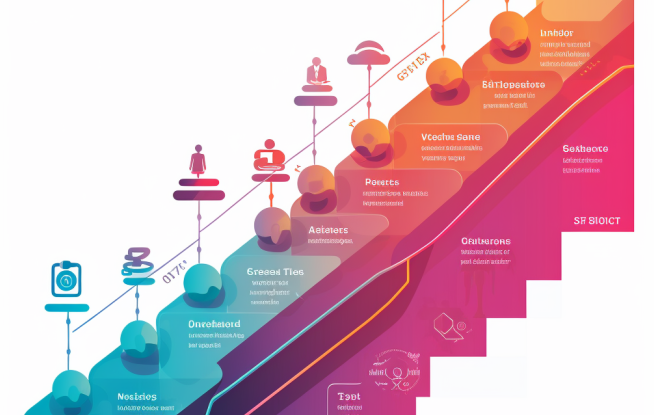In today’s competitive business landscape, companies are constantly searching for ways to gain an edge in their go-to-market (GTM) strategies. One powerful tool that’s often overlooked is sales enablement. This critical function can dramatically improve a company’s ability to execute its GTM plans effectively, driving revenue growth and market share.
What is Sales Enablement?
Sales enablement is the process of providing sales teams with the resources, tools, and training they need to sell more effectively. It encompasses a wide range of activities, from content creation and management to sales training and coaching. The goal is to equip salespeople with everything they need to engage buyers throughout the sales process.
But sales enablement is more than just a support function. When done right, it becomes a strategic driver of GTM success, aligning sales activities with broader business objectives and market opportunities.
The Evolution of Sales Enablement
The concept of sales enablement isn’t new, but its scope and importance have expanded significantly in recent years. What was once a relatively simple process of providing sales collateral and basic training has evolved into a sophisticated, data-driven function that touches nearly every aspect of the sales process.

This evolution has been driven by several factors:
- Changing buyer behaviors: As buyers become more informed and self-directed, sales teams need more sophisticated tools and strategies to add value.
- Technological advancements: The rise of CRM systems, sales intelligence tools, and AI-powered analytics has transformed how sales enablement can support sales teams.
- Increased competition: In crowded markets, sales enablement can provide a crucial competitive advantage by helping sales teams differentiate their offerings and engage more effectively with prospects.
- Focus on efficiency: As companies look to optimize their sales processes, sales enablement has become a key lever for improving productivity and reducing costs.
The Impact of Sales Enablement on GTM Success
The benefits of effective sales enablement are clear and quantifiable. According to research by the Sales Enablement Society, companies with a formal sales enablement function see 15% higher win rates and 8% higher quota attainment than those without.

But the impact goes beyond just closing more deals. Sales enablement can:
- Accelerate the sales cycle: By providing sales reps with the right content and tools at the right time, sales enablement can help move deals through the pipeline faster.
- Improve sales and marketing alignment: Sales enablement often serves as a bridge between sales and marketing, ensuring that marketing efforts are aligned with sales needs and vice versa.
- Enhance customer experience: Well-equipped sales reps can provide more value to prospects and customers, leading to better relationships and increased customer satisfaction.
- Drive consistent messaging: Sales enablement ensures that all sales reps are delivering a consistent message, which is crucial for brand integrity and effective GTM execution.
- Facilitate faster onboarding: New sales reps can get up to speed more quickly with robust sales enablement resources and training.
Core Components of Effective Sales Enablement
While every organization’s sales enablement function will look different, several key components are crucial for success:
- Content Management: This involves creating, organizing, and distributing sales collateral, product information, and other resources that sales reps need to engage prospects effectively.
- Sales Training and Coaching: Ongoing training and coaching help sales reps stay up-to-date on product knowledge, sales techniques, and market trends.
- Technology and Tools: From CRM systems to sales intelligence platforms, the right tech stack can dramatically improve sales efficiency and effectiveness.
- Analytics and Reporting: Data-driven insights help sales enablement teams continuously improve their efforts and demonstrate ROI.
- Process Optimization: Sales enablement should constantly look for ways to streamline and improve sales processes.
Overcoming Sales Enablement Challenges
While the benefits of sales enablement are clear, implementing an effective program isn’t without its challenges. Some common hurdles include:
- Lack of buy-in: Sales reps may be resistant to change, especially if they don’t see the immediate value of sales enablement initiatives.
- Difficulty measuring ROI: It can be challenging to directly attribute revenue gains to sales enablement efforts.
- Technology adoption: Implementing new tools and getting sales reps to use them consistently can be an uphill battle.
- Content overload: With so much content available, sales reps may struggle to find what they need when they need it.
- Keeping pace with change: Markets, products, and buyer behaviors are constantly evolving, and sales enablement must keep up.
To overcome these challenges, successful sales enablement leaders focus on:
- Demonstrating value early and often: Quick wins can help build buy-in and momentum.
- Establishing clear metrics: Defining and tracking relevant KPIs helps prove the value of sales enablement initiatives.
- Prioritizing user experience: Tools and resources should be intuitive and easy to use.
- Implementing robust content management systems: AI-powered systems can help sales reps find the right content quickly.
- Fostering a culture of continuous learning: Regular training and feedback loops help keep sales enablement efforts relevant and effective.
The Future of Sales Enablement
As we look to the future, several trends are shaping the evolution of sales enablement:
- AI and Machine Learning: These technologies will play an increasingly important role in personalizing content recommendations, predicting buyer behavior, and optimizing sales processes.
- Virtual and Augmented Reality: These immersive technologies could transform sales training and product demonstrations.
- Hyper-personalization: As buyers expect more personalized experiences, sales enablement will need to provide tools for creating highly tailored content and interactions.
- Integration with Customer Success: Sales enablement is expanding beyond just supporting the initial sale to encompass the entire customer lifecycle.
- Focus on Soft Skills: As AI takes over more routine tasks, sales enablement will increasingly focus on developing reps’ emotional intelligence and relationship-building skills.
Conclusion
Sales enablement has evolved from a nice-to-have support function to a critical driver of GTM success. By equipping sales teams with the right tools, content, and skills, sales enablement can dramatically improve a company’s ability to execute its GTM strategy effectively.
As markets become more competitive and buyer behaviors continue to evolve, the importance of sales enablement will only grow. Companies that invest in building robust sales enablement capabilities now will be well-positioned to outperform their competitors in the years to come.
Whether you’re just starting to build your sales enablement function or looking to take an existing program to the next level, remember that success requires ongoing commitment, continuous improvement, and a willingness to adapt to changing market conditions. With the right approach, sales enablement can truly become your secret weapon for GTM success.

For companies looking to optimize their GTM strategy and sales enablement efforts, working with pitch deck consultants can provide valuable insights and expertise to ensure your message resonates with potential customers and investors alike.





